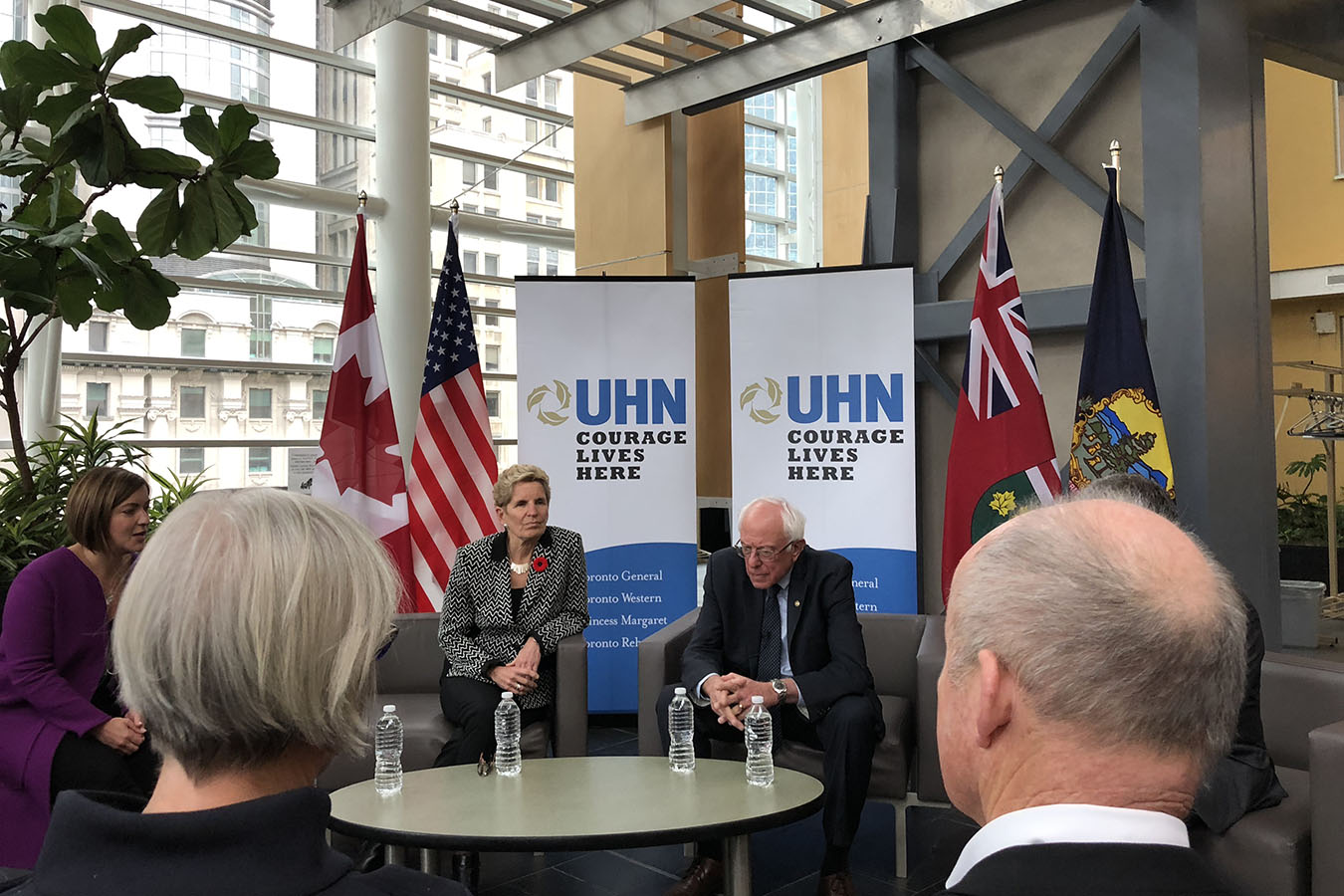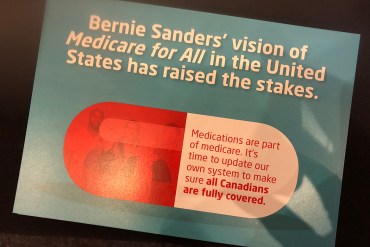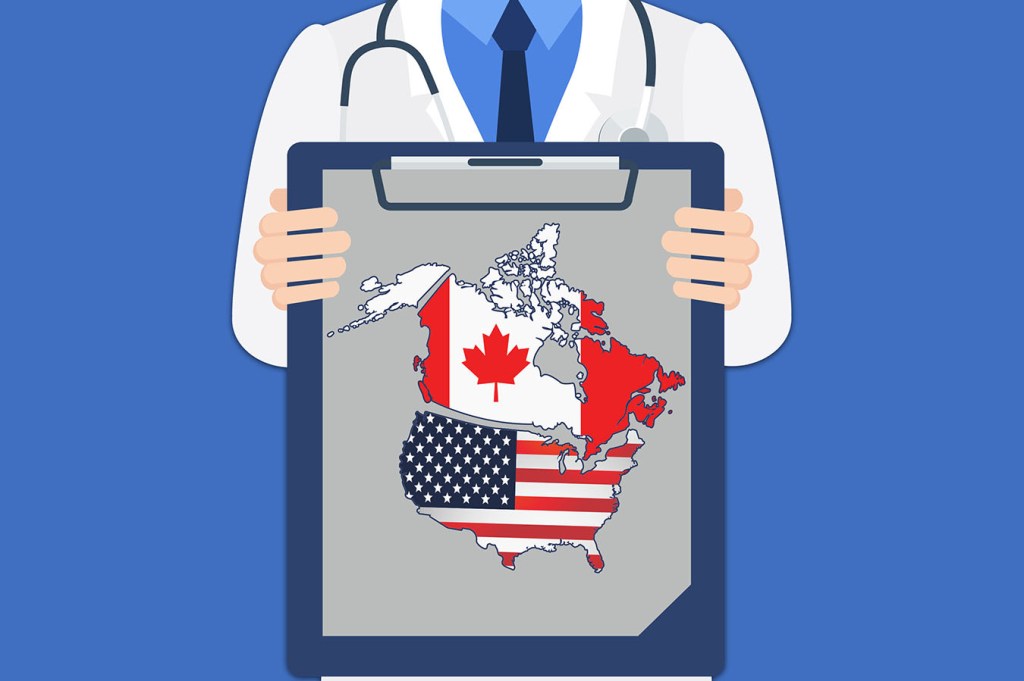TORONTO — For Dr. Peter Cram, an American internist who spent most of his career practicing in Iowa City, Iowa, moving here about four years ago was almost a no-brainer.
He’s part of a small cohort of American doctors who, for personal or professional reasons, have moved north to practice in Canada’s single-payer system. Now when he sees patients, he doesn’t worry about whether they can afford treatment. He knows “everyone gets a basic level of care,” so he focuses less on their finances and more on actual medical needs.
Cram treats his move as a sort of life-size experiment. As a U.S.-trained physician and a health system researcher, he is now studying what he says is still a little-understood question: How do the United States and Canada — neighbors with vastly different health systems — compare in terms of actual results? Does one do a better job of keeping people healthy?
For all of the political talk, in many ways it is still an open question.
“The Canadian system is not perfect. Neither is the United States’,” Cram said over coffee in Toronto’s Kensington Market. “Anyone who gives you a sound bite and says this system should be adopted by this country … I think they’re being almost disingenuous.”
Still, American support for government-run, single-payer health care, once a fringe opinion, is picking up momentum.
Sen. Bernie Sanders, the Vermont independent who emphasized single-payer health care in his 2016 presidential bid, helped move Canada into the U.S. spotlight.
Lawmakers in California and New York have taken steps toward such programs on a statewide level, and the concept is a hot topic in gubernatorial campaigns in both Illinois and Maryland.
In addition, polling finds doctors and patients increasingly supportive, though the percentages in favor typically drop when questions are focused on the taxpayer costs of such a system.

Although Canada spends less per person on health care than the United States does, many Canadian experts worry that growing health costs pose a serious challenge. (Shefali Luthra/KHN)
In Canada, medical insurance comes through a publicly funded plan. And, while covering everyone, Canada still spends far less on health care than the United States does: just over 10 percent of its GDP, compared with the United States’ 18 percent.
To many American advocates, Canada’s health system sounds like the answer to the United States’ challenges.
But in Toronto, experts and doctors say the United States first must address a more fundamental difference. In Canada, health care is a right. Do American lawmakers agree?
“The U.S. needs to get on with the rest of the world and get an answer on that issue before it answers others,” said Dr.
Robert Reid, a health quality researcher at the University of Toronto, who has practiced medicine in Seattle.
It’s an obvious disconnect, said Dr. Emily Queenan, a family doctor now practicing in rural Ontario. Queenan, 41, grew up in the United States and did her residency in Rochester, N.Y. By 2014, after about five years of frustrating battles with insurance companies over her patients’ coverage, she had enough. She found herself asking, why not Canada?
She moved north. Gone, she said, are the reams of insurance paperwork she faced in America. Her patients don’t worry about affording treatment.
“We have here a shared value that we all deserve access to health care,” said Queenan. “That’s something I never saw in the States.”
Sanders has pushed the discussion, with a “Medicare-for-All” bill in Congress and in a visit to Toronto this fall. It was part fact-finding mission and part publicity tour. On that trip, doctors, hospital leaders and patients painted a rosy picture where everyone gets top-notch care, with no worries about its cost to them.

Sanders and Ontario Premier Kathleen Wynne meet with doctors and patients at Toronto General Hospital. (Shefali Luthra/KHN)
“They have managed to provide health care to every man, woman and child without any out-of-pocket cost,” Sanders told reporters while speaking on the ground floor of Toronto General Hospital. “People come to a facility like this, which is one of the outstanding hospitals in Canada. They undergo a complicated heart surgery, and they leave without paying a nickel.”
It sounds idyllic. But the reality is more complicated.
While progressives tout the Canadian system for efficiently providing universal health care, the Commonwealth Fund, a nonprofit research group, puts it just two spots above the United States — which ranks last — in its health system assessment. It suggests that in timeliness, health outcomes and equitable access to care, Canada still has much to improve.
“If you deny there are trade-offs, I think you’re living in wonderland,” Cram said.
The Canadian Vibe
In Canada, everyone gets the same government-provided coverage. Provinces use federal guidelines to decide what’s covered, and there’s no cost sharing by patients.
“Come to our waiting room,” said Dr. Tara Kiran, a family doctor at St. Michael’s Hospital, in Toronto. “You will see people who are doctors or lawyers alongside people who are homeless or new immigrants. People with mental health issues or addiction issues together with people who don’t.”
But that insurance — which accounts for 70 percent of health spending in Canada —addresses only hospitals and doctors. Prescription medications, dentists, eye doctors and even some specialists aren’t covered. Most Canadians get additional private insurance to cover those.

The Canadian health care system guarantees that doctors and hospital visits are covered. But it doesn’t include a prescription drug benefit, an omission advocates are pushing to change. (Shefali Luthra/KHN)
In countries such as Britain or Germany people can opt out to buy private insurance. Canada prohibits private insurers from offering plans that compete with the government, a restriction some doctors are suing to lift. It’s not a popular view in Canada, experts said, but the implications are significant.
Here, the debate focuses more on bringing down health spending — a concern in the United States, too, but one often overtaken by politics.
Canada’s provinces put, on average, 38 percent of their budgets into health care, according to a 2016 report from the Canadian Institute for Health Information, a nonprofit organization. Canada’s single-payer system is supported by a combination of federal and provincial dollars, mostly raised through personal and corporate income taxes. (A few provinces charge premiums, which are income-based and collected with taxes.)
“We make improvements or change things only to have additional debates about other things. Those debates are constant, and they should be,” Reid said. “[But] most of what you hear in the U.S. is back to the tenor of the insurance framework, whether [they] should have Obamacare or not.”
Taxes in Canada are generally higher than in the United States. Canada, for instance, collects a levy on goods and services and also taxes wealthier citizens at a higher income tax rate.
But many here call that a concession worth making, and also note that they don’t have to pay separate premiums for health care as people in the United States do.
“We can’t have what we have if we don’t pay the taxes,” said Brigida Fortuna, a 50-year-old Toronto resident and professional dog groomer, while on her way to a medical appointment. “But you have to take care of your people. … If you don’t have good health care, you’re not going to have a good society.”
The Trade-Offs
That said, it’s not a perfect system. Canadian health care doesn’t cover prescriptions, physical therapy and psychotherapy. And there’s the concern that Canadians wait longer for health care than would Americans with robust health coverage.
There are cases, Reid said, when cancer care in Canada is delayed enough to yield health problems. Ex-pat Cram pointed to research that suggests low-income people are likely to wait longer for medical care — which can result in worse health outcomes.
“We do have a two-tiered system,” he said. “Most know it. Few will admit it.”
Typically, experts said, people with serious medical needs will jump to the front of the line for medical care. Kathleen Wynne, Ontario’s Liberal Party premier, said the Canadian government is actively trying to improve wait times.
But so far, it’s unclear how effective that’s been. A 2017 report from the nonprofit Canadian Institute for Health Information found that wait times had dropped for hip fracture repairs. But waits for, say, MRIs and cataract surgery have actually gotten worse. Depending on their province, the average wait for cataract removal ranged from 37 days to 148 days.
Many patients, though, said the waits were a trade-off they were willing to make. Toronto-based Nate Kreisworth, a 37-year-old music composer and producer, called it an obvious choice.
“You are not going to die because you’re waiting,” he said on a recent sunny morning while walking with his dog near Kensington Market. “Better wait times for everything? Sure, why not. But as long as the major issues are being covered, then I don’t think it’s really much of an issue.”
As Fortuna put it: “If you go for a headache and someone else is going to lose their arm, of course they’re going to take care of that person. I’m OK with that, because someday that could be me, too.”
Waits aren’t the only concern, though. There’s financing — and what it would cost for the United States to implement a system like Canada’s.
Because Americans have higher expectations about what a health plan should cover, it would be more expensive to adapt a Canadian approach, said Dr. Irfan Dhalla, an internist and health quality researcher in Toronto. And the quality may differ from what they are used to.
And in Canada, “everyone gets Kmart care,” Cram said. “There’s no Neiman Marcus care.”
Of course, some amenities that drive up costs — fancier food, softer gowns or private rooms — don’t necessarily produce better results.
A 2017 study found that patients with cystic fibrosis fared better in Canada than in the United States. But on the other hand, 2015 research comparing surgical outcomes found better results in the United States than in Canada. The Commonwealth Fund’s most recent ranking places Canadian health outcomes above America’s, but only by two slots.
Even so, many Canadians said they couldn’t imagine living with an American system. It’s a question not just of efficiency, but of fairness. Kreisworth compared his experience to that of family members in the United States.
“I talk to my brother’s girlfriend who is a part-time worker who has no [health] benefits — who would just be sick and not go to the doctor because she couldn’t afford to pay,” he said. “I can’t imagine that here. It seems like — it’s so wrong. It just seems utterly wrong.”
Note: This story has been corrected to reflect that health care takes up 18 percent of the United States’ GDP, rather than 16 percent as originally reported.







